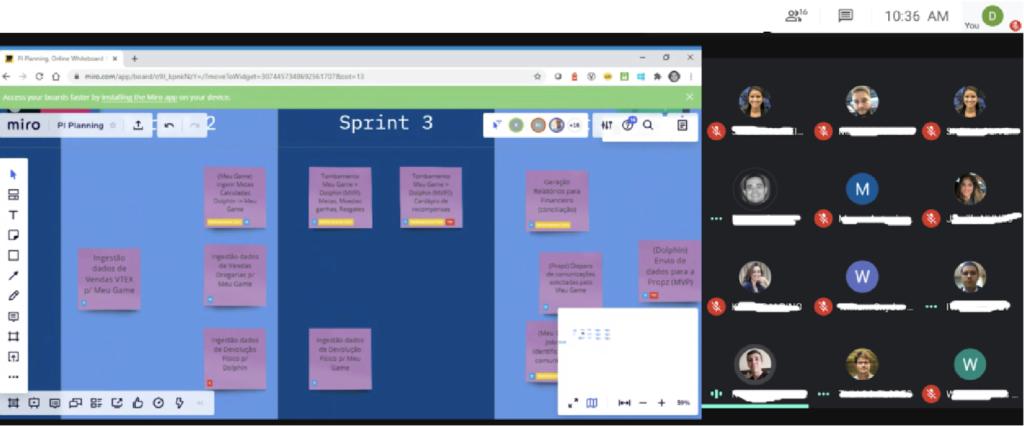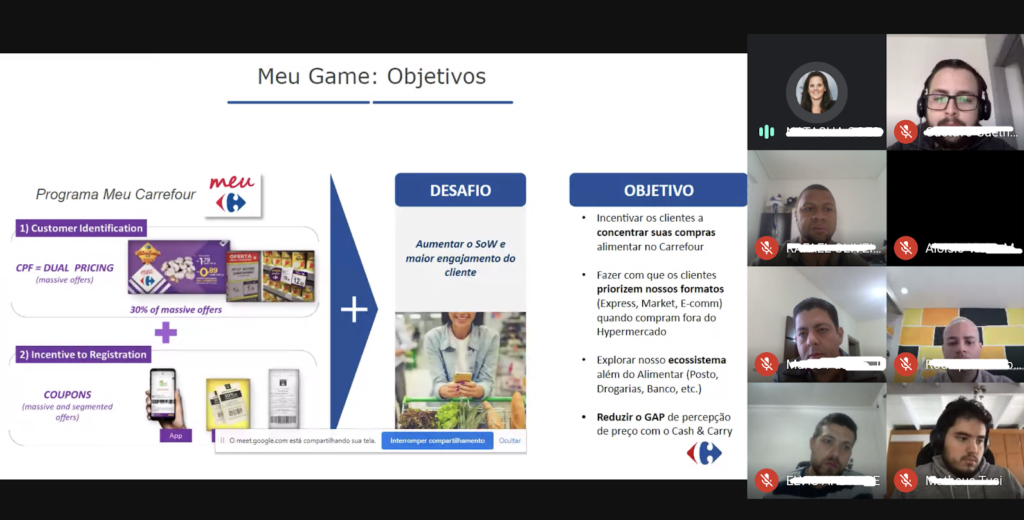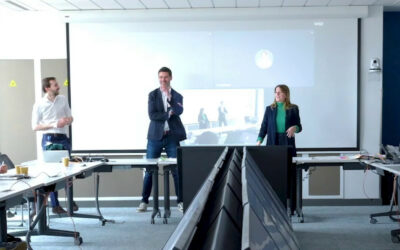Since July 2019, Carrefour Brazil has been moving fast to embrace agility with a great deal of enthusiasm and conviction, developing more and more necessary skills to deal fast with the vast challenges of the digital world. Agile methodologies showed us the way to work differently, for instance learning how to conduct Program Increment (PI) planning meetings.
When we though we were done… the Covid-19 crisis forced us to change our ways of working again! We had to quickly adapt our PI planning methodology to deal with the new health and safety regulations. Let me walk you through our experience.
Carrefour Brazil’s agile journey and PI planning
Carrefour Brazil’s digital transformation brings a significant volume of change, fast. In this context, adoption of agile methodologies is mandatory to speed up the amount of tech-enabled innovation we deliver to our customers. Hence, the initiatives of our tech roadmap are progressively embracing the principles of agility. Today, approximately 20% of our tech projects are delivered using some form of iterative methodologies.
There are clear differences between teams organized in a traditional way and multidisciplinary squads that respect the rituals, cadence and artifacts preached by agile frameworks. One of these is the way to understand changes in business processes and how these changes impact IT applications. In our case, we decided to adopt the PI planning ceremony. It is an interesting way to look at this issue as it creates a shared view on the functionalities to prioritize and sponsors’ expectations. It also outlines interdependencies between teams, and gives as well as an idea of the complexity and the effort. Finally, the feeling of confidence in team’s ability to deliver is produced as an output.
This event takes about two full workdays for the teams involved, and happens preferably in an environment propitious to discussions. In such a context all teams feel secure and engaged, able to understand and be receptive to listen to executive expectations, and open to explore solutions and qualify the underlying complexities.
For instance, we recently applied this methodology in our project aiming to replace the e-commerce platform, kicked-off in January 2021. It was an amazing experience! In two PI planning sessions we identified more than three thousand stories to implement! But that is a story for another day…

SuperApp – Planning for a “virtual” PI planning?
Let me use another example to demonstrate a “virtual” PI planning. This time, our objective was to deliver Carrefour Brazil’s SuperApp, our brand new retail e-commerce mobile app, full of advanced capabilities including a really exciting loyalty program.
Unfortunately, we had to take into account a new variable: the Covid-19 pandemic (you might want to check how Carrefour accelerated during the Covid-19 crisis). This meant we could not count on the physical presence of everyone in a single location, however PI plannings traditionally take place in the same room. Would it be possible to have a completely remote event achieving the same types of outcomes? We were of course going to try, but we had to plan it carefully!
First, we defined our goals: We needed to offer the best possible experience to ~90 people from 10 different areas. The audience was heterogeneous: from executives to QA, from director to developer, and need to be all committed to creating the best delivery plan. This ment enabling participation, alignment, transparency and, overall, extreme clarity on what was going on.
Then we decided to created a structure of virtual rooms, each serving a clear purpose:
- A “main room”, where major events requiring everyone involved in the program took place.
- 5 additional rooms, one for each stream: Home, Choice, Scan & go, Loyalty, Architecture and Loyalty data.
All these rooms will be equipped with “virtual boards“: One for each stream and as well as a program board to track the big picture. After a thorough benchmark and several discussions with partners, we decided to use the Miro tool. This tool has been used by companies such as Cisco, Deloitte or Mailchimp to facilitate agile ceremonies.
The agenda for the two-day event was shared with all participants ahead of time. We formalized the objective of each activity, its duration, the required audience and the virtual room that will be used. The aim was to finish the PI planning with a macro plan, a very well-structured set of activities and decisions in relation to risks or potential blocking points. Here is the proposed agenda:
- SuperApp overview.
- Architecture overview.
- Delivery backlog estimation, refinement and prioritization.
- Identification of risks, blocking points and dependencies.
- Decision-making on risks and blocking points.
- Level of team confidence.

The virtual PI planning experience
Let’s stop for one moment and take a breath. Please try to put yourself in our shoes… we were facing a huge pressure here! This was going to be one of the most important digital products for Carrefour Brazil in 2020, there was a large amount of Carrefourians involved during two days, we had never done such an important and large event online, a lot of alignments had to be made… We were a bit freak out to be completely honest… but super excited too!
In the end, everything happen to work in a very fluid, dynamic and transparent way. During the event, teams worked on their stream boards using the Miro tool. The big advantage is that people were not afraid of having to physically “go to the board” to put their post-it on. After the first initial minutes to get it going, there was a significant flow of ideas flying to the board!

Besides filling out the boards, there were meaningful moments of discussion around issues and risks. Everyone was positive to raise these, acknowledge their existence and propose ways to resolve them. We were as effective than in a face-to-face event. And it was a bit more “organized” when compared to other large meetings, with less side discussions happening (or actually happening, but really as side discussions in the G-suite chat that did not disturb the progress of the whole team).

At the end, in a very collaborative manner, each one the teams collaborated to complete the program board, in a unique, fun and different dynamic that led to the production of the final roadmap. It was awesome to see how fast the teams embraced it, even if the event was virtual.
The outcomes
We were extremely proud of the achievements made during the virtual PI planning:
- We had the five stream boards completed with a delivery plan for the next six sprints (in a 2-week development cycle).
- A proper program board was completed, containing the macro delivery plan and highlighting dependencies, internal (among all teams involved in the development) as well as external (e.g., information security, infrastructure, tax).
- 17 risks were raised and mitigated.
- More than 20 external dependencies mapped, addressed or resolved.
- All in all, our teams were confident, with a 70% confidence level, to be able to deliver everything according to the plan.
And we also had a very important intangible results:
- Great alignment with the main sponsors of the program, that praised the transparency of the process.
For instance, Mariana Werneck, Senior Innovation Manager at Carrefour Brazil, highlighted that:
“(The) PI Planning was essential to have clarity at all levels about the way forward until the launch of the new SuperApp “Meu Carrefour”. Two days very well organized by the CMC team, led by Davi, who allowed the total alignment of the team for everyone to row in the same direction in the final sprints.“ - A fantastic level of energy and engagement of everyone involved. Perhaps, the greatest we have ever had! At the end, there was a general sense of satisfaction floating on the air. Each participant had the chance to contribute and be part of the plan.
- And reinforced belief on our ability to perform remote work during Covid-19!
Let me finalize saying that a few days ago we just had our second virtual PI planning with twice as many people! Everything went smoothly and we are more than happy to have tested this methodology for the future of agile@Carrefour Brazil.
Discover more on how we changed our ways of working during the pandemic!




